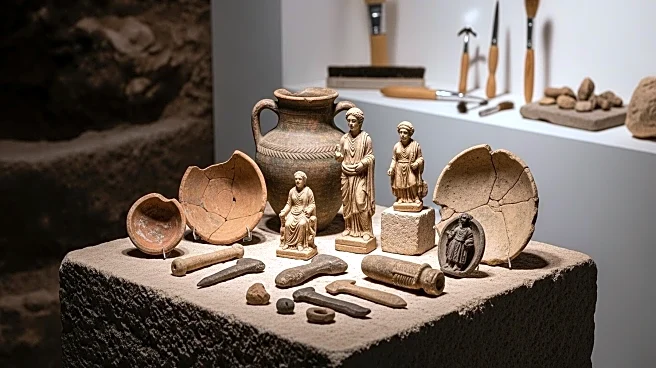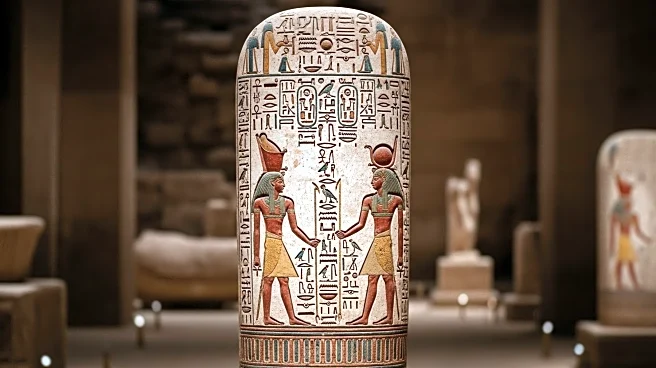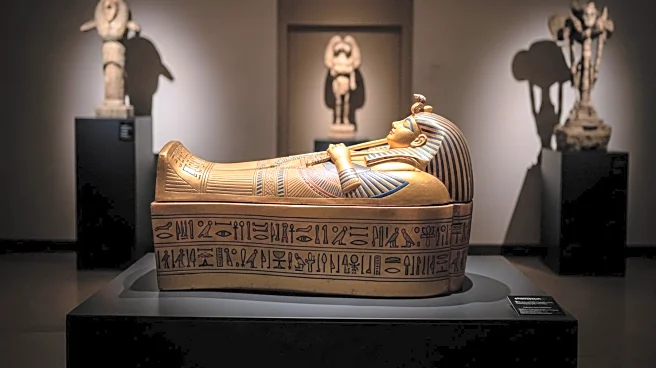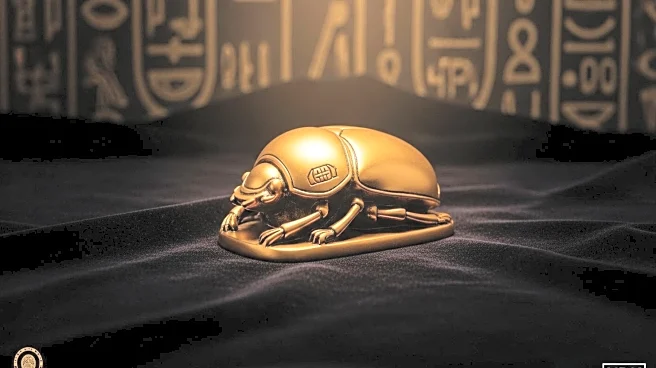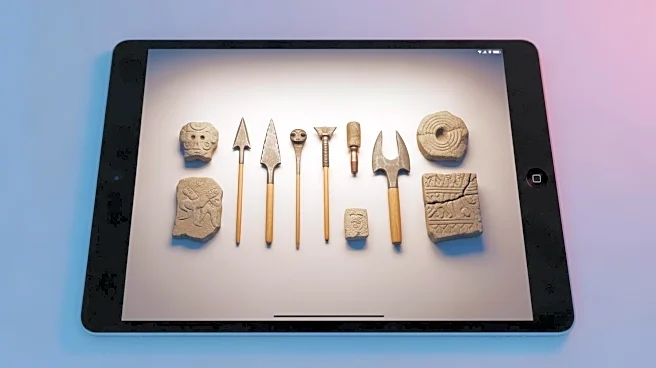What is the story about?
What's Happening?
Archaeologists have discovered a new version of the Decree of Canopus at the 'Hill of the Pharaohs' site in El Husseiniya, Egypt. This sandstone slab, inscribed solely with hieroglyphics, is in excellent condition and features a winged sun disk with royal cobras. The Decree of Canopus, originally issued in 238 B.C.E. during the reign of Ptolemy III, is significant for its historical insights into Ptolemaic rule and its role in deciphering ancient Egyptian writing. This discovery adds to the six previously found versions, offering new opportunities for research and comparison.
Why It's Important?
The discovery of a new version of the Decree of Canopus provides valuable insights into ancient Egyptian history and the Ptolemaic period. It enhances our understanding of the political, religious, and social dynamics of the time. The decree's content, which includes military campaigns, religious practices, and calendar reforms, offers a comprehensive view of Ptolemaic governance. This find also contributes to the ongoing study of hieroglyphics and the development of ancient writing systems, which are crucial for historical and linguistic research.
Beyond the Headlines
The discovery highlights the importance of archaeological research in uncovering historical narratives and preserving cultural heritage. It also raises questions about the preservation and interpretation of ancient texts, as well as the role of archaeology in modern society. The find may inspire further exploration of submerged sites like the sunken city of Canopus, potentially leading to more discoveries that could reshape our understanding of ancient civilizations.
AI Generated Content
Do you find this article useful?



